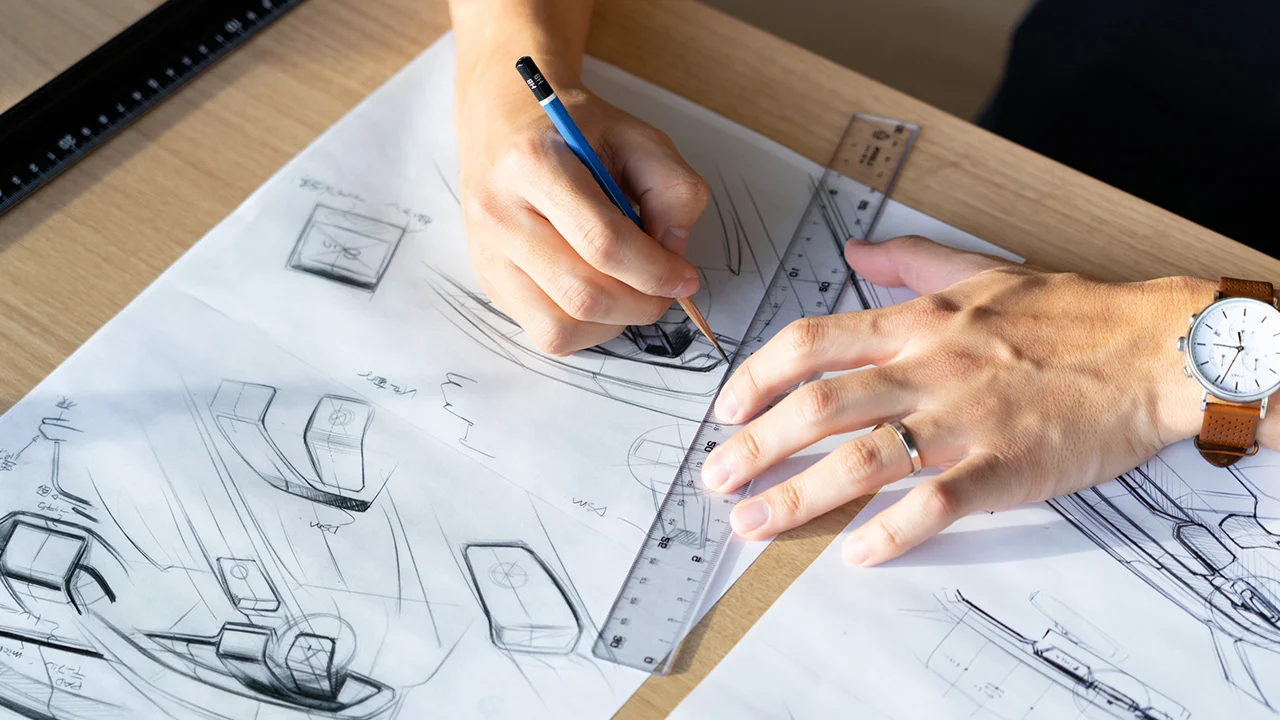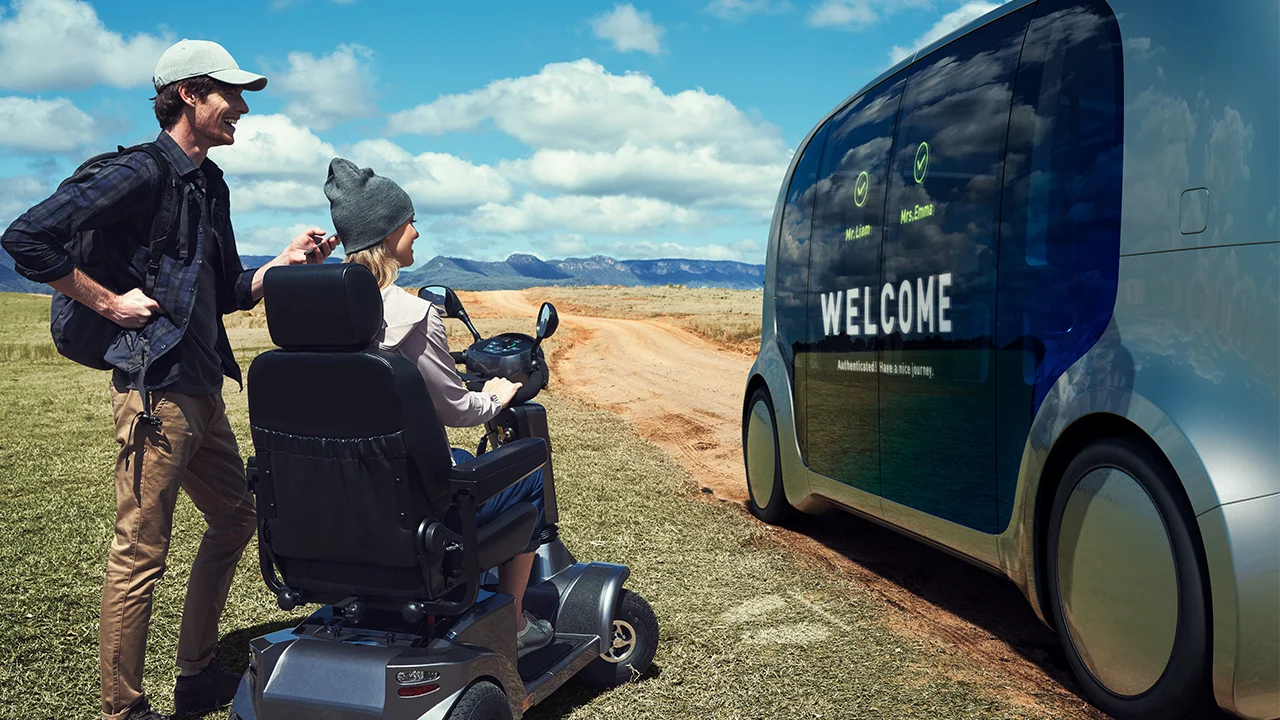Did you find this article helpful for what you want to achieve, learn, or to expand your possibilities? Share your feelings with our editorial team.


Mar 12, 2021
VISION & IDEAThe larger the display, the broader the scope of safety
Increasingly large displays can become hubs for shared experiences
Mobility technology is evolving at an unprecedented speed. Equipped with more and more sensors, mobility is gaining more autonomy.Getting better at driving than ever before,AI is fast becoming a dependable partner, offering us safe and secure mobility.
Technological advancements run in parallel with the obligations and restrictions that come with mobility. Drivers can concentrate more on driving than ever before. Being free from the obligations of driving, we can also share experiences with our companions in the front and back seats.
Contents of this article
Enabling shared experiences

Today, we are seeing a trend towards larger displays mainly because bigger screens are more effective for sharing experiences with a large number of people, as is the case with public viewing. Larger displays will not just enable drivers to concentrate more on driving, they will also make future journeys more enjoyable for everyone on board.
DENSO has developed a revolutionary product to overcome many of the challenges that prevent the wide-spread use of larger screens. Spanning the width of the car from the driver's seat to the passenger seat, the DENSO Pillar-to-Pillar Display’s functionality puts safety first by preventing the reflection of sunlight. The design features a seamless and curved surface display. In addition, the cost is kept at a reasonable level, making it possible to install in a wide variety of vehicles. After overcoming all kinds of obstacles, we are now ready to deliver the new product to the world.
Optimized display for mobility

If we were only concerned with convenience, we could retrofit our tablets and smartphones. However, when it comes to mobility, which can sometimes cause life-threatening injuries, safety is always the first priority. The right information must be delivered at the right time, to the right place, and by the right means.
Let us take the reflection of sunlight as an example. No matter how beautiful and shiny the display is, it is useless if the reflection is so poor that it interferes with driving. In addition, the screens of tablets and smartphones are designed to be compact enough to be operated by swiping, scrolling, and pinching out. However, complex operations are not possible while driving. Therefore, it is necessary to design displays that require as little manipulation as possible.

One of the outstanding advantages of DENSO’s Pillar-to-Pillar display is that it integrates well with mobility. For example, it is possible to capture the driver's gaze and display relevant and urgent information.
The mobility of the future will be able to understand the condition of each passenger and maintain comfortable air quality, temperature, and humidity inside the vehicle. By notifying each passenger individually through the display that the cabin is secure and comfortable, we can create a state where everyone who shares the mobility experience can truly relax. That's what we believe.
“How do we create a shared mobility experience that is comfortable and secure for all passengers traveling together?” With this question in mind, we created a display that has a completely different shape from tablets and smartphones and works with a different algorithm.
“There shall be an optimal display designed exclusively for mobility.”
This is the answer DENSO came up with.
Creating experiences, not products
What is the driving force for the development capabilities of DENSO?
Mr. Hisatsugu of DENSO’s Engineering Division says, “I think that we value our culture to pursue projects based on a human-centered way of thinking called “Genchi Genbutsu (on-site verification).”
In the future, it will be necessary to transform values that do not yet exist in the world and ideas that "make us happy" into forms that can be implemented in society.

However, simply talking about ideals will not bring us closer to the future. The future will not be realized by what we discuss, but by what we create. In the development process of DENSO, as represented with DENSO’s tagline “Crafting the Core,” we move our hands while we think.
The development team members gather while looking at the actual prototypes and share their ideas briskly. Then, to see how it would look in real life, they prepare an actual car with the instrument panel removed, place a mock-up on it, repeat their hypothesis and then conduct verification. This is not a theory-based approach, but rather a way to put theories into practice and solve problems based on “Genchi Genbutsu.”

Try to make it first. By repeatedly trying and failing at an early stage, we can quickly learn what we are missing. When we can set our own targets, we keep our eyes open to new information. The team members say, "We go to technology exhibitions in the medical and construction industries. By being constantly on the lookout for new information, we are able to flexibly adopt approaches and new ideas from different fields. As a result, we are able to find and implement what is truly important for human beings before anyone else.

At DENSO’s development site we rely on a thorough, user-oriented way of thinking. This is where engineers from different fields gather and prepare prototypes, repeat hypotheses and conduct verification. Mr. Kato, Director of Cockpit Systems Engineering Division 2, says, “We can say it is a kind of agile development, can’t we?”
DENSO has also established its UX Innovation Center, where specialists gather in Tokyo. The development cycle originated from UX will be promoted more in the future.
We create what we truly need based on actual experiences while thinking in a human-oriented way, and they are not designed relying solely on computers or calculations on paper. Through this process, engineers feel more like they are “creating experiences” rather than “creating products.”
Towards safer mobility for everyone

We believe that sharing information with the driver and the person in the passenger seat is just the beginning. We would like to be able to cover the entire area inside the cockpit, thereby enhancing the experience of shared mobility. In addition, we see the range of communication extending outside the vehicle, improving traffic safety by enabling communication between vehicles and pedestrians. Overall, a wider scope of communication paves the way for a safer mobility society.
COMMENT
Changing your "Can'ts" into "Cans"
Where Knowledge and People Gather.



